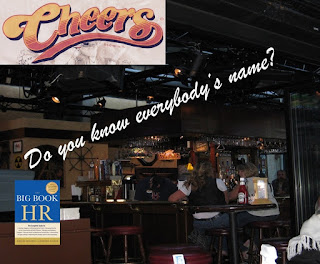Can you stand one more lesson about generations and
their differences? If you doubt there are differences among generations in the
workplace, you may not recognize that each generation has their own unique cultural
nuances.
I recently had an interesting experience on a
personal level while visiting my son. It's an experience about rock music and
artistic expression. It taught me we can always learn from each other – and
it’s never too late to do so. My son, Erik, spent his teenage years in Washington
DC, during what he would describe as the height of the punk rock scene. During
that time, I tried my best to be interested even if I didn't understand or
appreciate the music. I was not going to be like my parent's generation who
constantly berated rock and roll. Full disclosure, I'm a rock and roll junkie,
especially rock from the 50s and 60s. That was the music that influenced MY
generation, just as punk influenced Erik's.
One of the things Erik always talked about was the
indie music scene, specifically independent music producers (independent
labels) like Dischord and Teen Beat, who worked out of houses, garages, and
basements. I didn't dispute that they could produce records, but how could they
have a reach outside their local community. Remember, the Internet was just
catching on during that time and social media did not exist.
Fast forward from the 1990s to 2015. There's a
documentary called Salad Days about the roots of the DC punk rock scene. Within
a month of reading about it in The Washington Post, I'm visiting Erik in
Albuquerque, NM and the documentary is playing at a local theater that shows
indie movies. Full disclosure, I now understand the indie economy that Erik
exposed me to decades ago as I explore the world of self-publishing or indie
publishing.
I thoroughly enjoyed Salad Days, and listening to
these punk rockers, who now look like totally respectable adults in their 50s
(whatever a respectable 50-something is supposed to look like). I learned a
great deal about the evolution of their music, their stories. I connected on
some level with those stories since I'd lived them second hand through Erik. I
recognized the venues since I still live in the DC Metro area. In fact, other
than Erik who had met most of the people in the film, I probably had a greater connection
than many of the other viewers in the theatre because of my proximity to
Washington DC. I didn’t have to
understand or even like the music to appreciate what others were experiencing.
My lesson from this experience is that there are
many differences in the workforce, generational differences being one.
Generations are shaped by the events that took place in their lives, what and
when they were exposed to those events.
It's part of their culture. Take some time to listen and learn the
stories of other people. It's a great way to connect.





